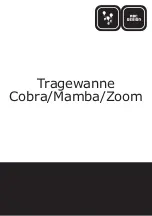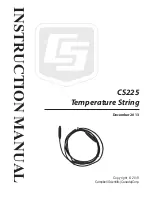
Type 310A
6
Single-Pilot Regulator
Installation
A Type 310A-32A regulator bleeds no gas to
atmosphere during normal operation, thus making
the regulator suitable for installation in pits and
other enclosed locations without elaborate venting
systems. This regulator also can be installed in pits
subject to flooding by venting the pilot spring case
above the expected flood level so that the pilot setting
can be referenced to atmospheric pressure.
1. Use qualified personnel when installing,
maintaining, or operating this regulator. Inspect
the regulator and the pipeline to be certain both
are free of foreign materials.
2. Install the regulator so that the flow arrow cast
on the main valve matches the flow direction of
process fluid through the regulator.
3. Apply pipe compound to the male pipeline
threads before installing a regulator with NPT
end connections. Use gaskets between pipeline
and regulator flanges when installing a regulator
with flanged end connections.
!
WARnIng
A regulator may vent some gas to
the atmosphere. In hazardous or
flammable gas service, vented gas
may accumulate, causing personal
injury, death, or property damage
due to bursting of pressure-retaining
parts. Vent a regulator in hazardous
gas service to a remote, safe location
away from air intakes or any hazardous
location. The vent line or stack opening
must be protected against condensation
or clogging.
4. A Type 32A pilot has a 1/4 NPT vent connection
in the spring case. To remotely vent gas from
the spring case, remove the screened vent, and
connect 1/4-inch (6,4 mm) piping or tubing to the
spring case connection.
The piping or tubing should vent to a safe
location, have as few elbows as possible,
and have a screened vent on its exhaust. Install
the regulator and any remote vent piping or tubing
so that the vent is protected from condensation,
freezing, or any substance that could clog it.
5. Connect a pilot supply line from the upstream
piping to the 1/4 NPT pilot inlet.
6. Connect a downstream control line to a
straight run of pipe 6 to 10 pipe diameters from
the regulator outlet as shown in Figure 6. If
such a distance is not practical, connect the
control line away from elbows, swages, nipples,
or any area where abnormal flow velocities occur.
Figure 6.
Typical Pressure Reducing Installation
24B4134
B2444
LOADIng TuBIng
hAnD VALVE A
1/4 nPT PILOT
SuPPLY COnnECTIOn
VEnT VALVE E
BLOCK VALVE
BYPASS VALVE
BYPASS LInE
VEnT VALVE D
1/2-InCh (13 mm)
DOWnSTREAM COnTROL LInE
hAnD VALVE B
LOCATE 6 TO 10 PIPE
DIAMETERS FROM
VALVE OuTLET
VEnT VALVE C
BLOCK VALVE
ALTERnATE
DOWnSTREAM
COnTROL LInE TAP






































